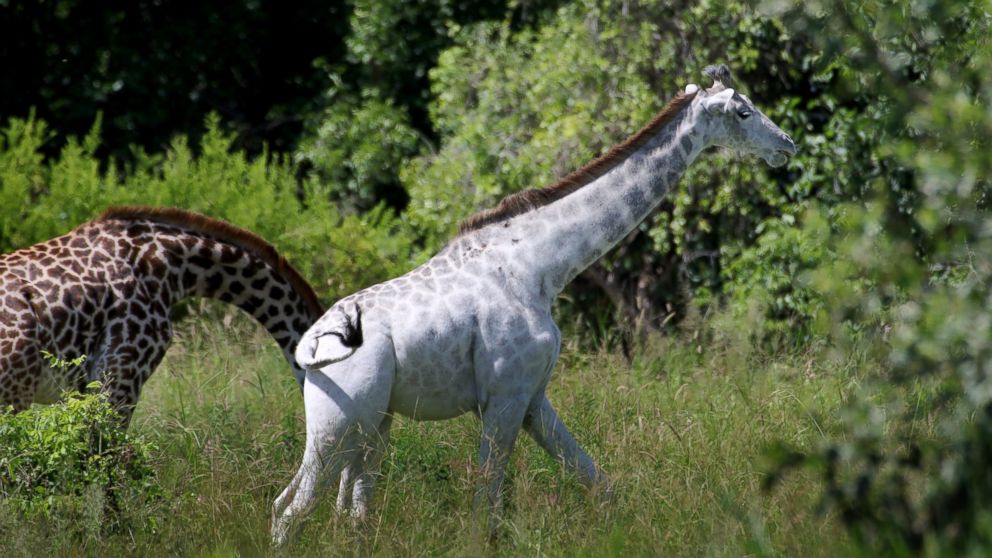Extremely Rare White Giraffe Spotted in Tanzanian National Park
A rare white giraffe may become the target of poaching in Tanzania.

— -- A rare white giraffe was spotted in Tanzania's Tarangire National Park. The giraffe, named Omo, has a condition called leucism.
"Leucism is a genetic condition that results in some of her skin cells being unable to create pigments, so she ends up looking very pale, with only vague patterns compared to a normal giraffe's coloration," said Derek Lee, the founder of the Wild Nature Institute. Lee researches giraffes at the park.
"It is very rare. This is only the second record of a white giraffe in Tarangire over the past 20 years or so, among more than 3,000 giraffes in the area," Lee told ABC News.
He was the first person to take photos of Omo.
Many fear Omo will become a target of poaching because of her unique coloring.
"It is illegal to kill giraffes in Tanzania because they are the national animal. But illegal market hunting for meat is well known to be rampant around Tarangire," Lee said. "Unfortunately, all giraffes, not just the white ones like Omo, are threatened by bushmeat poaching."
Lee hopes the media's interest in Omo can be used to shed light on the dire situation facing worldwide giraffe populations. According to Lee, habitat depletion and hunting for giraffe meat has caused giraffe populations throughout Africa to decline rapidly.
According to the Giraffe Conservation Foundation, there were more than 140,000 giraffes in Africa in 1999. Today the organization estimates that there are fewer than 80,000 giraffes on the continent.
"We hope Omo's popularity will raise global awareness for the problems facing giraffes," Lee said.
Lee noted that Omo is fitting right in with her giraffe peers.
"It was interesting that people wondered whether Omo was living happily within her herd," he said. "I think people love the fact that Omo was accepted by her more typically colored peers because it speaks to the human aspiration of tolerance and acceptance of those who look different and are not normal."




